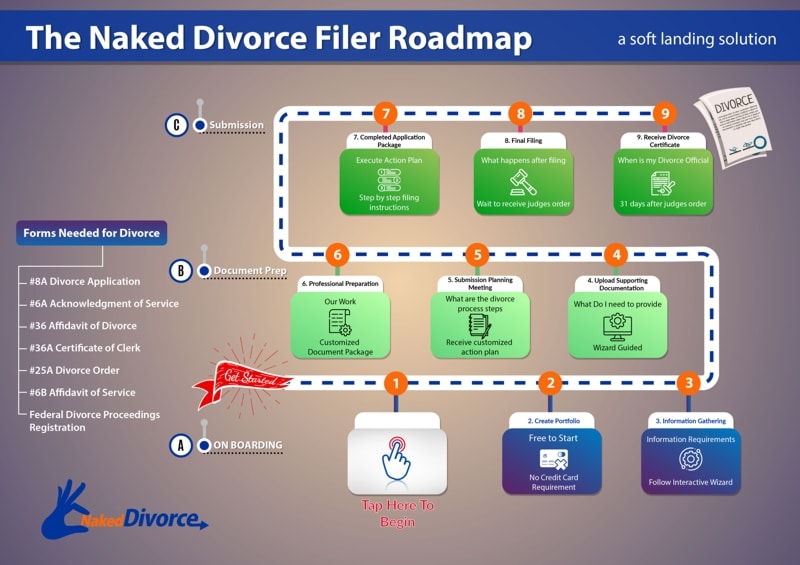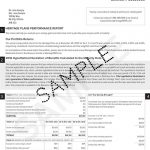The Divorce Process in Ontario: An Overview
Divorcing in Ontario despite the digital revolution, the divorce process in Ontario remains largely paper-based, lagging behind other countries that have transitioned to digital systems. Ontario introduced an Online Divorce Application during the early stages of the COVID-19 pandemic. However, it essentially involves uploading your paperwork rather than completing the forms online. A divorce application in Ontario still requires the completion of numerous separate forms. This comprehensive guide will assist you in navigating the divorce application process successfully.
Criteria for Getting a Divorce in Ontario
You don’t have to be a citizen of Canada to file for divorce here, but there are specific criteria that you’re required by the Divorce Act to meet before you can initiate divorce proceedings. An Ontario court will not grant an uncontested divorce, officially ending your marriage, until you’re able to provide clear evidence that you meet the following criteria:
- You and your spouse were legally married in Canada or any other country.
- You and your spouse lived in Ontario for at least one year before filing your divorce application.
- You are prepared for a marriage breakdown and to separate permanently from your spouse or have already taken steps to do so. You do not foresee the possibility of reconciliation.
There’s an exception to the first rule. The residency requirement could be flexible if you and your spouse live outside of Canada in a country that does not acknowledge your Canadian marriage. In this case, Canada’s Divorce Act will not apply to you. However, you can file for divorce under the country’s Civil Marriage Act. To do so, you’ll have to meet the following eligibility requirements:
- You and your spouse got married in Canada.
- You cannot get a divorce from your spouse in the country where one (or both) of you live because that country doesn’t recognize your Canadian marriage.
If both these criteria apply to your situation, your divorce lawyer can help you navigate the process of filing for divorce under the Civil Marriage Act. The steps will align with those set forth by the Superior Court in the province or territory where you were married.
Cost of Divorce in Ontario
The total cost of obtaining a divorce in Ontario is $632. When the divorce application is filed, the first payment of $212 is needed, which includes $202 in court fees and $10 for the federal Department of Justice.
Duration of the Divorce Process
A straightforward divorce can be concluded in 4 to 6 months. However, when issues such as custody and property division are disputed and complex, divorces that require judicial action or mediation can take longer.
Fault Divorce vs No-Fault Divorce
Before filing, you’ll need to know whether you’re filing for a fault or no-fault divorce. In other words, are you filing because your spouse harmed you in any way? If so, that qualifies as a fault divorce. On the other hand, if you’ve been separated for a year and you’re ready to make things official, that’s a no-fault divorce. To apply for a divorce, you’ll need to satisfy one of the three criteria:
- You and your spouse have been separated for one year (no-fault divorce)
- Your spouse committed adultery, and you have not forgiven them (for a fault divorce in Ontario)
- Your spouse has inflicted emotional or physical cruelty on you (for a fault divorce in Ontario)
If you meet one of these requirements, you can proceed with the divorce process. This tutorial provides an in-depth look at the fundamental concepts of getting divorced. The basic steps are as follows:
- Fill out the appropriate divorce forms
- Submit your application and other forms at an Ontario courthouse
- Pay all necessary court fees
- Follow the court rules and procedures given by the court
Before you begin this journey, it’s wise to seek legal representation and counsel from a local expert with experience in family law. This team will be able to ensure you’re completing the proper forms and taking suitable precautions.
Simple Divorce vs Joint Divorce
Generally speaking, a simple divorce application is when one spouse (the applicant) files for divorce from the other. The application is served to the other spouse (the Respondent), who then has the opportunity to respond. On the other hand, a joint divorce application is when both spouses agree on all the issues related to the divorce (like property division, child custody, etc.) and file for the divorce together. The term “simple divorce” may be somewhat deceptive, as the process is frequently far from straightforward. The initial step involves serving divorce papers to your ex-spouse, which can be costly and potentially fraught with conflict. Process servers, who are tasked with delivering these documents, often prioritize completion over discretion. There have been instances where documents were served at workplaces or in front of children, family, and friends, causing unnecessary embarrassment or distress. Moreover, divorce-related issues, such as the division of property and child custody, are not automatically settled with a simple divorce. This leaves the door open for potential disagreements. Since the divorce has been officially filed in court, any disputes must be resolved. This can result in a substantial escalation in legal fees. Please bear in mind that this is a general overview, and the specifics can differ based on individual situations and local legislation.
Filing Your Application for Divorce in Ontario
The following is an outline of the steps that are involved in filing an Ontario divorce. Applicants must:
- First, gather the relevant documents.
- Make four copies of each of all your documents and insert them in a stamped envelope addressed to each party.
- Take the documents to the court office, where you will meet with a staff member.
- The court office staff will assign the case a court file number and place a court seal on the application. You will also need to swear under oath to the content of Form 36.
- You will be given a Registration of Divorce Proceeding form to fill out. This form will be sent to the Department of Justice to determine if you have had any other divorce applications. If the form comes back clear, the Central Registry of Divorce will issue a Clearance Certificate.
- After filing, the court will issue a Divorce Order within about 6 to 10 weeks from filing if the divorce is uncontested.
- Once the Divorce Order is issued, you can then obtain a Certificate of Divorce.







